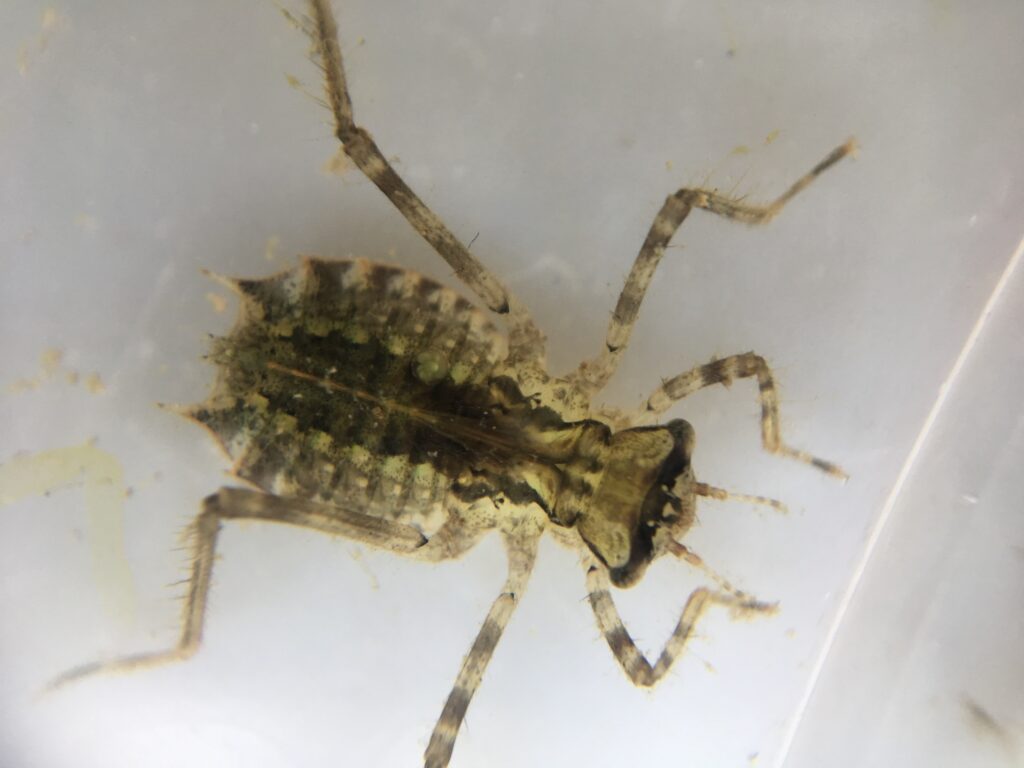
Before dragonflies take to the air, where the colorful creatures capture attention with their acrobatic flying, they live for a year or more at the bottom of lakes and rivers. They are fierce predators during this early aquatic stage of life, just like when they’re airborne adults. The insects are not only charismatic and eye-catching, but are also useful for analyzing pollution in their watery habitats.
A National Park Service program has been connecting the public with scientific research in the National Parks, including Voyageurs and Isle Royale in the Quetico-Superior region, that uses dragonfly larvae to measure mercury levels.
“Dragonfly larvae are excellent indicators of mercury risk because they can live for years underwater eating insects and even small fish,” the National Park Service says. “Once it is deposited, mercury can build up inside the larvae and give scientists insight into the health of the waters in which they live.”

Toxic element
Mercury is deposited in the lakes from the atmosphere, where it can drift hundreds or thousands of miles from its source, which is usually coal-fired power plants or other industrial facilities.
In waterbodies, the mercury can be transformed to an organic form that is easily ingested by plankton. From there, it works its way up the food chain, ultimately contaminating fish with concentrated mercury, where it can pose a risk to human health.
Mercury causes neurological problems in people, including slowing down brain development in fetuses and children. It can also harm the kidneys and liver.
“Low-level, long-term exposure can cause muscle tremors, irritability, personality changes, or rashes,” says the Minnesota Department of Health. “Nerve damage from mercury may start with a loss of sensitivity in hands and feet, difficulty in walking, or slurred speech.”
Dragonfly larvae both consume plankton, other aquatic insects, and even small fish, and are in turn consumed by larger fish. Studying the bugs can give researchers an idea of how much mercury is moving through the ecosystem.
All lakes in Voyageurs National Park and some at Isle Royale have fish-consumption advisories for mercury in effect.

People-powered science
The dragonfly-mercury project demonstrates how National Parks are not only valuable for recreation, but also serve as scientific laboratories, and classrooms. Many of the participants are students and teachers who visit the parks for field trips.
Citizens help capture the larvae, usually by dragging a net through shallows, and turn them over to the scientists, who analyze their mercury content.
“Park rangers and enthusiastic volunteer citizen scientists collect many times the number of dragonflies from many more parks than would be possible for scientists alone,” the Park Service says.
Since 2011, more than 4,500 citizens have participated in the project at 100 national parks. The volunteers have made a major contribution to the advancement of scientific understanding.
Chronic contamination
The large number of insects collected in the project translates to a big set of data that scientists can use to understand the problems posed by mercury.
The ability for mercury to travel long distances in the atmosphere means even remote lakes and rivers are at risk.
A recent column in the Ashland Daily Press noted that amount of mercury dragonfly larvae are higher at Isle Royale National Park than most other sites across the country.
“Isle Royale [National Park] is particularly sensitive to mercury pollution,” says the National Park Service. “The abundance of wetlands, low pH lakes, complex food webs, and predatory fish creates an environment susceptible to the bioaccumulation of toxics.”
In recent decades, mercury emissions into the environment have been reduced significantly, and some declines in contamination of fish and wildlife has also been documented.
What scientists have found not only helps grasp the current levels of contamination, but the ongoing project will let researchers and park managers monitor the situation. With the baseline set, changes in mercury levels should be easily detected in the future.

